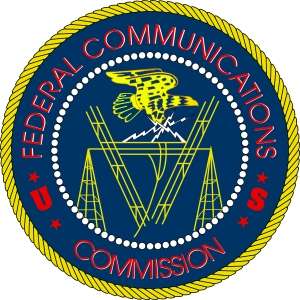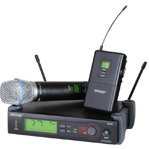The FCC Moderates as White Spaces Coalition & Wireless Microphones Battle for Air Superiority
“After February17th, 2009 wireless microphones operating above 698MHz should no longer be used.”
 Therefore time is of the essence and should the government decide to make a select few UHF channels available we know without a doubt it will not be enough. Manufacturers have been working diligently since the FCC made these announcements six years ago and I believe we may see a resurgence of manufacturers that have played a less prominent roll the last ten years or so. At least this seems to be the consensus for now. Before delving into the political bull pin the FCC should be commended for fending off the wolves and has maintained a neutral position despite the pressure from the “white spaces coalition” whose backbone is made up of some of the largest companies around the globe.
Therefore time is of the essence and should the government decide to make a select few UHF channels available we know without a doubt it will not be enough. Manufacturers have been working diligently since the FCC made these announcements six years ago and I believe we may see a resurgence of manufacturers that have played a less prominent roll the last ten years or so. At least this seems to be the consensus for now. Before delving into the political bull pin the FCC should be commended for fending off the wolves and has maintained a neutral position despite the pressure from the “white spaces coalition” whose backbone is made up of some of the largest companies around the globe.
This is a relatively simple topic that has been unnecessarily transformed into mass confusion. Most coverage on this topic is in regards to wireless broadband with little consideration for the entertainment industry. That side of the court is crowded with such big names as Intel, Hewlett-Packard, Microsoft, Philips, Motorola and Google. Unfortunately these companies are lobbying for plans that do very little to ensure the uninterrupted operation of wireless microphones. To those focused on wireless broadband interconnectivity the threat to wireless microphones means very little to them.
What they’re not considering is how far reaching the impact will be to areas where wireless microphones are vital. Remote on location news broadcast could potentially be faced with complicated and lengthy setup times in situations where precious minutes is all they have. All houses of worship including the smallest farm town churches employ the use of one or more wireless mics. Every live concert from arenas to local nightclubs uses multiple wireless mics and wireless instruments. Sporting events implement wireless systems for team and staff communications as well as wireless microphones for the PA and vocal performers (i.e. the national anthem). Beyond this you have every school auditorium or gymnasium, universities, performance theatres, lecture halls, boardrooms, distance learning facilities and the list goes on and on.
 Shure is a company that is synonymous with the cutting edge of microphone technology for over 80 years. Shure has spear headed a coalition of the industry’s preeminent wireless manufacturers, users and providers to voice their concerns with these proposals to key legislators and FCC officers. Currently the coalition consists of Shure Incorporated, the Professional Audio Manufacturers Alliance (PAMA), the Sports Video Group (SVG), PRG Audio, Springboard Productions, Masques Sound, Sound Associates Inc., Grad Ole Opry, the Recording Academy, National Religious Broadcasters (NAB), American Federation of Musicians (AFM), American Federation of Television and Radio Artists (AFTRA) to name a few. Shure is a member of two groups organized by the Institute of Electrical and Electronic Engineers (IEEE) – the world’s leading professional association for the advancement of technology. Shure joined these two groups to have a constant presence representing the interests of wireless microphones. The 802.18 Radio Regulatory Technical Advisory Group (RR-TAG) and the 802.22 Wireless Regional Area network (WRAN).
Shure is a company that is synonymous with the cutting edge of microphone technology for over 80 years. Shure has spear headed a coalition of the industry’s preeminent wireless manufacturers, users and providers to voice their concerns with these proposals to key legislators and FCC officers. Currently the coalition consists of Shure Incorporated, the Professional Audio Manufacturers Alliance (PAMA), the Sports Video Group (SVG), PRG Audio, Springboard Productions, Masques Sound, Sound Associates Inc., Grad Ole Opry, the Recording Academy, National Religious Broadcasters (NAB), American Federation of Musicians (AFM), American Federation of Television and Radio Artists (AFTRA) to name a few. Shure is a member of two groups organized by the Institute of Electrical and Electronic Engineers (IEEE) – the world’s leading professional association for the advancement of technology. Shure joined these two groups to have a constant presence representing the interests of wireless microphones. The 802.18 Radio Regulatory Technical Advisory Group (RR-TAG) and the 802.22 Wireless Regional Area network (WRAN).
Also working in conjunction with the Shure coalition is the National Association of Broadcasters (NAB), the Microphone Interests Coalition (MIC), the sports Technology Alliance (STA) and other groups including heavyweights from the music, theater, and house of worship communities.
Shure has also done a tremendous job of gaining additional legislative support on a bipartisan front from Representatives Shelley Berkley (D-NV), Jim Cooper (D-TN), and Steve Cohen (D-TN), Jesse Jackson, Jr. (D-IL), Mark Steven Kirk (R-IL) and Carolyn B. Maloney (D-NY). Where the “white spaces coalition” legislative proponents are Senators John Sununu (R-NH) and John Kerry (D-MA) who have both proposed bills that would allow the sale and use of unlicensed devices to be used in this bandwidth without requiring further testing and/or regulations on the hardware. They have taken the stance that the interruption of wireless microphone functionality is insignificant and should not be a deciding factor in the FCC’s final ruling.
Shure is taking a very fair approach acknowledging the some of the proposals under review have not yet been perfected more specifically the proposed Google beacon plain. The Motorola plan was met with significant roadblocks and ultimately failed to accomplish anything they had set out to prove. The Microsoft / Philips submission failed in an embarrassing fashion failing all tests and not meeting any of the requirements set forth by the FCC. It was later claimed that this mishap was due to a unit that had been damaged in shipping. The White Space Coalition disputed the FCC’s Test results based on the “damaged” unit and responded by posting data collected sing their own independent testing facilities.
 The plans presented and under review now are impractical and simple show absolutely no data to support reliability and consistency. For large installations often containing twelve to twenty-four wireless units we would be force to deploy disabling beacons for every channel, then access a database and enter in a litany of information in order to be “legitimate” in a given geographic location. Tell that to you remote broadcast team as they general have less that 30 seconds to set up and be on the air. Further complicate that by having multiple news crews on the scene and you suddenly have a disaster on your hands.
The plans presented and under review now are impractical and simple show absolutely no data to support reliability and consistency. For large installations often containing twelve to twenty-four wireless units we would be force to deploy disabling beacons for every channel, then access a database and enter in a litany of information in order to be “legitimate” in a given geographic location. Tell that to you remote broadcast team as they general have less that 30 seconds to set up and be on the air. Further complicate that by having multiple news crews on the scene and you suddenly have a disaster on your hands.
In an excerpt from Shure Incorporated it sums up their current standing on the matter and whom they and their coalition will be supporting.
Shure recommended that the FCC focus on evaluation the prospects of new fixed services in the TV band. Specifically, Shure asked the FCC to give serious consideration to the fixed service/adjacent channel protection plan proposed by Fiber Tower and Rural Telecom Group, and supported by Sprint and T-Mobile. “With appropriate power limits, this fixed/adjacent channel approach could go far toward providing increased broadband access for Americans while maintain much needed protections for wireless microphone services,” the filing asserts (Shure May 6th, 2008).
By Jason Levert
No comments yet.

Leave a comment